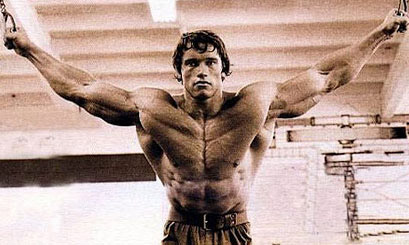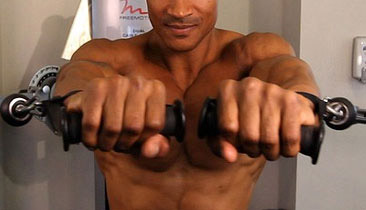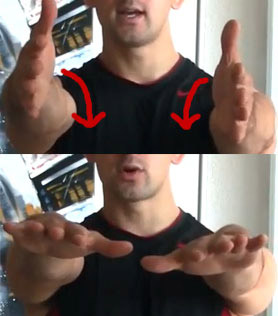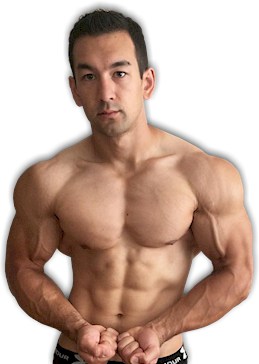CABLE FLY FORM TIP FOR BETTER CHEST GROWTH

There’s no doubt that basic compound presses should form the underlying foundation of your chest training routine, but an isolated fly exercise is still a great way to finish off your workout and target your pecs from a unique angle.
Any basic fly movement will be effective when executed in proper form, but cable flys are going to be the ideal choice for the simple reason that they provide consistent tension on the pecs throughout the entire range of motion.
Because of the force of gravity and the path that the weight is travelling in, dumbbell flys only stimulate your chest to a significant degree in the bottom half of the range, making them a slightly less effective exercise overall.
If you’ve decided to include a few sets of cable flys as part of your chest workout, here’s a very quick and easy tip to help you get a deeper, more powerful contraction in your pecs on each rep…
Rather than simply keeping your hands in a neutral “palms facing in” position throughout the entire movement, instead, focus on rotating your shoulders and hands inward so that your palms are facing down at the end of each rep.

How does this simple form tweak increase the effectiveness of your cable flys?
Well, as I’ve covered many times before, the primary function of the pecs is “horizontal adduction”, which is the act of bringing your upper arm across the front of your body. If you take a look at any basic pressing or fly movement you’ll see that it always involves this basic movement.
However, the pecs also perform a second function that many people aren’t aware of, which is “internal rotation” of the shoulder joint.
You can demonstrate this function for yourself right now by placing your arms straight out in front of you with your palms facing eachother, and then twisting your arms inward until your palms are facing the floor or even slightly away from eachother.

If you flex your pecs at the same time that you do this, then you should feel a stronger “squeeze” in the muscles as you internally rotate your shoulders further and further, almost as if they’re cramping up a bit.
So, by applying this function to your cable flys, you’ll be incorporating both horizontal adduction and internal shoulder rotation into the movement, allowing you to shorten your pecs to a greater degree and thus achieve a deeper muscle contraction on each rep. This can be utilized on any cable fly exercise, whether it be standing, lying or seated.
Many people have asked me whether this technique should be used on dumbbell flys as well, but I’d actually recommend sticking to the standard neutral grip when performing the free weight variation.
The simple reason for this is that if you twist your hands inward during a dumbbell fly, the weights will turn horizontal and end up banging into eachother which limits the amount of horizontal adduction you can achieve.
In any case, give this cable fly form variation a try and see how it feels for you. Most people who execute it properly report a noticeable improvement in how effectively they’re able to stimulate their chest with it.
If you found this article helpful, make sure to sign up for your FREE custom fitness plan below...




